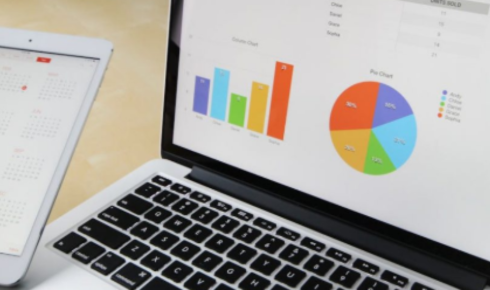Pay-per-click (PPC) advertising is a cornerstone of digital marketing strategy, and AdWords PPC management—when done right—can drive significant long-term return on investment (ROI). However, many businesses fall into the trap of setting and forgetting their campaigns. To maintain performance and ensure sustainable growth, marketers must continuously refine, analyze, and adapt their strategies. In this guide, we’ll walk through practical, actionable steps to optimize your campaigns for the long haul.
Define Clear Goals and KPIs
Before launching or optimizing any campaign, define your core business objectives and establish measurable KPIs. Are you trying to drive traffic, generate leads, increase sales, or build brand awareness? Each goal will influence the structure of your campaign.
For example, if your primary goal is lead generation, you’ll want to track conversions, cost per lead (CPL), and lead quality. Start by integrating Google Ads with Google Analytics and a CRM system like HubSpot or Salesforce. This allows you to follow the customer journey from click to conversion and beyond. Regularly reviewing your KPIs helps identify areas for improvement and ensures that campaign adjustments align with long-term business growth.
Conduct Comprehensive Keyword Research
Long-term ROI begins with targeting the right keywords. Avoid over-saturating your campaigns with broad match terms. Instead, conduct keyword research using tools like Google Keyword Planner, SEMrush, or Ahrefs. Look for high-intent keywords with moderate competition and reasonable cost-per-click (CPC).
To execute this strategy:
- Identify seed keywords relevant to your product or service.
- Analyze competitor keywords and identify gaps in their strategy.
- Group keywords into tightly themed ad groups for better Quality Score and relevance.
- Continually refine your keyword list by pausing low performers and adding high-converting long-tail terms.
For example, instead of bidding broadly on “shoes,” a local boutique might target “handmade leather shoes Austin” to reach more qualified leads.
Improve Quality Score for Lower CPC
Google rewards ads with higher Quality Scores by lowering CPC and boosting ad rank. Quality Score is influenced by three factors: ad relevance, landing page experience, and expected click-through rate (CTR).
To improve your Quality Score:
- Write tightly focused ad copy that matches keyword intent.
- Ensure the landing page is directly related to the ad and provides a seamless user experience (fast load times, mobile optimization, easy navigation).
- A/B test different headlines and calls to action (CTAs) to increase CTR.
For instance, if your ad targets “emergency plumbing repair,” ensure the landing page clearly states availability, service areas, and contact options. Avoid sending users to a generic home page.
Use Smart Bidding Strategies
Manual bidding may work initially, but to optimize for long-term ROI, leverage Google’s Smart Bidding strategies. These use machine learning to adjust bids in real-time based on the likelihood of a conversion.
Popular Smart Bidding options:
- Target CPA: Automatically sets bids to get as many conversions as possible at your target cost-per-acquisition.
- Maximize Conversions: Uses your budget to generate the most conversions possible.
- ROAS (Return on Ad Spend): Ideal for e-commerce brands looking to prioritize profitability.
Set up Smart Bidding after collecting sufficient conversion data (at least 30 conversions in the past 30 days). Monitor performance and adjust your strategy as needed. For example, if Target CPA is too aggressive, it may throttle impressions—consider loosening constraints to allow more volume.
Refine Ad Copy and Test Variations
Effective ad copy drives clicks, but it must also align with user intent. Use dynamic keyword insertion (DKI) and tailor your messaging to highlight unique selling points (USPs).
Steps to refine ad copy:
- Write at least three headline variations and two descriptions for every ad group.
- Use A/B testing to evaluate performance metrics such as CTR, conversion rate, and bounce rate.
- Analyze data monthly and replace underperforming ads with new variations.
Example: A SaaS tool targeting “project management software for remote teams” might test headlines like “Streamline Remote Work Today” vs. “Project Management Made Simple.” Over time, performance data will reveal which message resonates best with your audience.
Optimize Landing Pages for Conversions
Landing pages must do more than look good—they need to convert. According to a leading SEO Agency, aligning your ad and landing page content builds trust and improves conversion rates.
Execution tips:
- Include a compelling headline that matches the ad copy.
- Provide social proof (testimonials, case studies, client logos).
- Simplify forms (ask only for essential information).
- Ensure mobile responsiveness and fast loading speeds.
For example, an ad promoting a free demo should direct users to a page that immediately highlights the benefits of the demo, includes a form above the fold, and reassures with testimonials or trust badges.
Monitor, Report, and Adjust Regularly
Optimization isn’t a one-time task. Use a recurring reporting structure to review campaign performance. Focus on metrics like ROAS, CTR, conversion rate, impression share, and Quality Score. Weekly reviews are best for active campaigns, while monthly deep dives help assess strategic direction.
Execution process:
- Set up custom dashboards in Google Ads or Google Data Studio.
- Use filters to segment performance by device, location, and audience.
- Schedule monthly performance audits and identify top/worst performers.
Adjust budgets based on proven results. Shift spend from low-performing campaigns to top converters. For example, if a certain keyword consistently drives leads at a low CPL, increase its budget to scale returns.
Leverage Audience Targeting and Remarketing
Targeting the right audience improves efficiency. Use Google Ads’ audience segments such as in-market audiences, affinity groups, and customer match lists. Additionally, build remarketing lists for users who visited your site but didn’t convert.
Steps to implement:
- Link Google Ads with Google Analytics to import audience segments.
- Create campaigns targeting users who abandoned cart, viewed specific services, or visited key pages.
- Use tailored ads with different messaging for cold audiences vs. returning visitors.
For example, if someone visited your pricing page but didn’t sign up, a remarketing ad offering a discount or free trial could encourage conversion.
Effective AdWords PPC agency for long-term ROI isn’t about quick wins—it’s about strategic, consistent optimization. By aligning campaigns with clear goals, refining targeting, improving ad and landing page quality, and continuously analyzing performance, marketers can maximize value and scale growth over time. With these strategies in place, you’re not just running ads—you’re building a sustainable profit engine.






